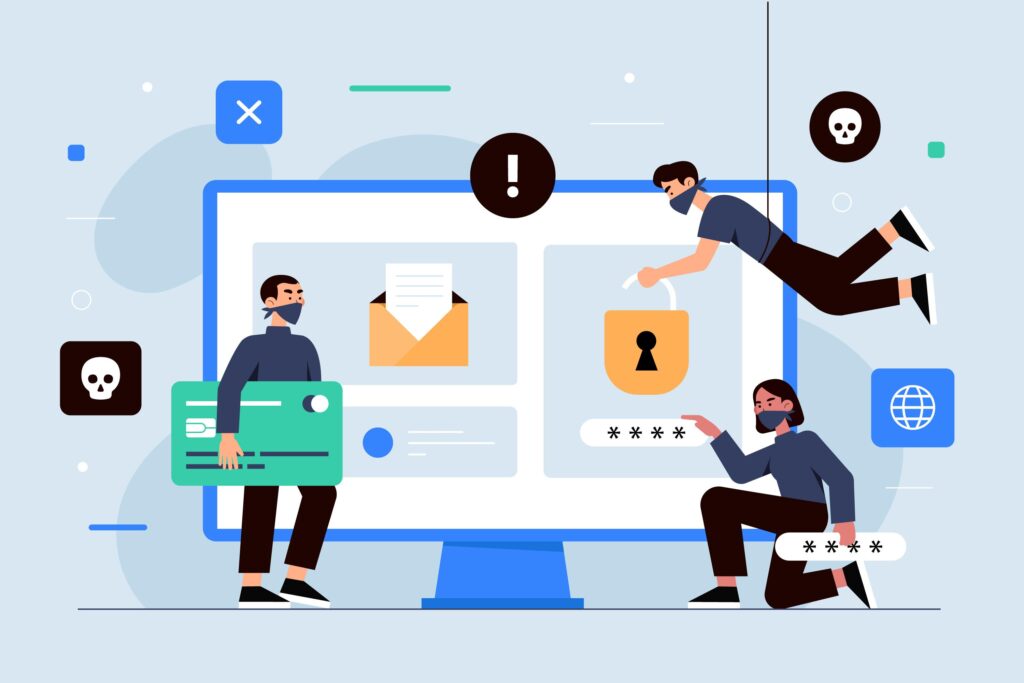 Email Security : spoofing, phishing, and spam protection
Email Security : spoofing, phishing, and spam protection
Email security refers to the practices and measures put in place to protect email communication and the information exchanged through email from unauthorized access, data breaches, and other threats. Given the sensitive nature of the information often shared through emails, ensuring their security is of paramount importance. Here are some key aspects of email security:
- Encryption: Encryption is a process of converting the content of an email into a secure code that can only be read by the intended recipient. There are two main types of encryption used in email security:
- Transport Layer Security (TLS): This encrypts the communication between email servers during transmission, ensuring that the email content cannot be intercepted or tampered with while in transit.
- End-to-End Encryption: This ensures that only the sender and the recipient can read the email. Even the email service provider can’t access the email’s content. Services like PGP (Pretty Good Privacy) and S/MIME (Secure/Multipurpose Internet Mail Extensions) provide end-to-end encryption.
2. Authentication and Authorization:
- Sender Policy Framework (SPF): SPF helps prevent email spoofing by specifying which servers are allowed to send emails on behalf of a domain.
- DomainKeys Identified Mail (DKIM): DKIM adds a digital signature to outgoing emails, allowing recipients to verify that the email originated from the claimed domain and hasn’t been tampered with.
- Domain-based Message Authentication, Reporting, and Conformance (DMARC): DMARC builds on SPF and DKIM by providing instructions to email receivers on how to handle messages that fail authentication checks.
3. Anti-Phishing Measures:
- Education: Training users to recognize phishing attempts and suspicious emails can greatly reduce the risk of falling for phishing attacks.
Filters and Scanners: Email providers often use filters to identify and divert phishing emails and spam into a separate folder.
4. Anti-Malware Scanning:
- Many email services automatically scan attachments and links within emails for malware and viruses to prevent users from inadvertently downloading malicious content.
- Multi-Factor Authentication (MFA): Requiring multiple forms of authentication (e.g., password and a code sent to your phone) adds an extra layer of security to email accounts.
- Regular Software Updates: Keeping your email client and operating system up to date ensures that you have the latest security patches.
- Secure Password Practices: Using strong, unique passwords for email accounts and changing them regularly can prevent unauthorized access.
- Backup and Recovery: Regularly backing up your emails and having a recovery plan in place can mitigate the impact of data loss due to security breaches.
- Policy Enforcement: Organizations can implement policies to ensure that employees adhere to security best practices when using email.
- Email Gateway Security: Deploying security solutions that monitor incoming and outgoing emails for threats and vulnerabilities can provide an additional layer of protection.
BIMI, or Brand Indicators for Message Identification, is a standard that aims to enhance email authentication and security while also providing a way to visually authenticate the sender of an email. BIMI is closely related to email authentication protocols like SPF, DKIM, and DMARC, but it goes a step further by allowing organizations to display their brand logo alongside authenticated emails in the recipient’s inbox. BIMI is a way to verify information about your brand. Like DMARC, DKIM, and SPF
How BIMI works:
- Email Authentication: BIMI doesn’t replace existing email authentication methods like SPF, DKIM, and DMARC; rather, it builds on them. These authentication methods help verify that an email was sent from a legitimate source and hasn’t been tampered with.
- Verified Mark Certificate (VMC): To participate in BIMI, an organization needs to obtain a Verified Mark Certificate (VMC) from a BIMI-authorized certificate authority. This certificate asserts that the organization is the legitimate owner of the brand logo they want to display.
- DNS Record: The organization needs to create a DNS (Domain Name System) record that references the VMC and provides the URL of the brand logo image. This record is used by email providers to retrieve the logo when displaying authenticated emails.
- Email Display: When an email is sent from an authenticated source and passes DMARC validation, the recipient’s email client can check for the BIMI DNS record. If the record is found, the associated brand logo is displayed next to the email in the recipient’s inbox.
Benefits of BIMI:
- Enhanced Brand Trust: The presence of a recognizable logo next to authenticated emails can increase recipient trust and reduce the likelihood of phishing attacks.
- Improved User Experience: BIMI provides a consistent and visually appealing way for organizations to display their brand identity in recipients’ inboxes.
- Incentive for Strong Email Authentication: To implement BIMI, organizations must have proper email authentication in place, which promotes better email security practices.
- Reduced Risk of Spoofing: Since BIMI requires proper authentication, it can help mitigate the risk of domain spoofing and impersonation.
Remember, email security is an ongoing process that requires vigilance and adaptation to new threats. Keeping informed about the latest security practices and staying updated on the technologies used to secure email communications is crucial.